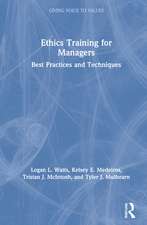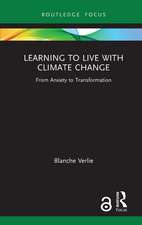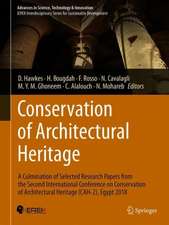Advances in Utopian Studies and Sacred Architecture: Advances in Science, Technology & Innovation
Editat de Claudio Gambardella, Claudia Cennamo, Maria Luisa Germanà, Mohd Fairuz Shahidan, Hocine Bougdahen Limba Engleză Hardback – 3 feb 2021
Therefore this book, on the one hand, considers the importance of utopia as a tool and how it offers an economic and social resource to improve cities’ wealth, future and livability. On the other, it explores the impact of religious and cultural ideals on cities that have recently emerged in this context.
Based on numerous observations, the book examines the intellectual legacy of utopian theory and practices across various academic disciplines. It also presents discussions, theories, and case studies addressing a range of issues and topics related to utopia.
| Toate formatele și edițiile | Preț | Express |
|---|---|---|
| Paperback (1) | 1395.94 lei 6-8 săpt. | |
| Springer International Publishing – 4 feb 2022 | 1395.94 lei 6-8 săpt. | |
| Hardback (1) | 1403.52 lei 3-5 săpt. | |
| Springer International Publishing – 3 feb 2021 | 1403.52 lei 3-5 săpt. |
Din seria Advances in Science, Technology & Innovation
- 18%
 Preț: 2114.60 lei
Preț: 2114.60 lei - 20%
 Preț: 1081.52 lei
Preț: 1081.52 lei - 18%
 Preț: 1254.36 lei
Preț: 1254.36 lei - 18%
 Preț: 1243.29 lei
Preț: 1243.29 lei - 18%
 Preț: 799.79 lei
Preț: 799.79 lei - 18%
 Preț: 1566.90 lei
Preț: 1566.90 lei - 18%
 Preț: 2135.11 lei
Preț: 2135.11 lei - 18%
 Preț: 1699.47 lei
Preț: 1699.47 lei - 18%
 Preț: 1248.02 lei
Preț: 1248.02 lei - 15%
 Preț: 653.14 lei
Preț: 653.14 lei - 15%
 Preț: 666.24 lei
Preț: 666.24 lei - 18%
 Preț: 1677.26 lei
Preț: 1677.26 lei - 18%
 Preț: 1444.55 lei
Preț: 1444.55 lei - 15%
 Preț: 653.14 lei
Preț: 653.14 lei - 18%
 Preț: 1248.20 lei
Preț: 1248.20 lei - 18%
 Preț: 1233.83 lei
Preț: 1233.83 lei - 18%
 Preț: 1565.29 lei
Preț: 1565.29 lei - 18%
 Preț: 1121.76 lei
Preț: 1121.76 lei - 18%
 Preț: 1400.35 lei
Preț: 1400.35 lei - 18%
 Preț: 1392.46 lei
Preț: 1392.46 lei - 18%
 Preț: 1121.76 lei
Preț: 1121.76 lei - 18%
 Preț: 1405.09 lei
Preț: 1405.09 lei - 15%
 Preț: 653.14 lei
Preț: 653.14 lei - 18%
 Preț: 1834.58 lei
Preț: 1834.58 lei - 18%
 Preț: 948.92 lei
Preț: 948.92 lei - 15%
 Preț: 648.24 lei
Preț: 648.24 lei - 18%
 Preț: 1230.66 lei
Preț: 1230.66 lei - 15%
 Preț: 704.69 lei
Preț: 704.69 lei - 20%
 Preț: 1167.33 lei
Preț: 1167.33 lei - 18%
 Preț: 1866.00 lei
Preț: 1866.00 lei - 18%
 Preț: 1128.08 lei
Preț: 1128.08 lei - 18%
 Preț: 972.62 lei
Preț: 972.62 lei - 18%
 Preț: 967.40 lei
Preț: 967.40 lei - 18%
 Preț: 900.80 lei
Preț: 900.80 lei - 18%
 Preț: 1008.12 lei
Preț: 1008.12 lei - 15%
 Preț: 646.62 lei
Preț: 646.62 lei - 18%
 Preț: 1128.08 lei
Preț: 1128.08 lei - 18%
 Preț: 1402.35 lei
Preț: 1402.35 lei - 18%
 Preț: 1576.37 lei
Preț: 1576.37 lei - 15%
 Preț: 601.60 lei
Preț: 601.60 lei - 18%
 Preț: 1211.72 lei
Preț: 1211.72 lei - 20%
 Preț: 673.17 lei
Preț: 673.17 lei - 15%
 Preț: 651.51 lei
Preț: 651.51 lei - 18%
 Preț: 1242.83 lei
Preț: 1242.83 lei - 18%
 Preț: 1248.68 lei
Preț: 1248.68 lei - 18%
 Preț: 1233.83 lei
Preț: 1233.83 lei - 18%
 Preț: 1587.39 lei
Preț: 1587.39 lei - 18%
 Preț: 1241.73 lei
Preț: 1241.73 lei - 5%
 Preț: 1322.29 lei
Preț: 1322.29 lei
Preț: 1403.52 lei
Preț vechi: 1711.62 lei
-18% Nou
Puncte Express: 2105
Preț estimativ în valută:
268.58€ • 282.41$ • 221.91£
268.58€ • 282.41$ • 221.91£
Carte disponibilă
Livrare economică 27 martie-10 aprilie
Preluare comenzi: 021 569.72.76
Specificații
ISBN-13: 9783030507640
ISBN-10: 3030507645
Pagini: 368
Ilustrații: XVII, 368 p. 326 illus., 243 illus. in color.
Dimensiuni: 210 x 279 mm
Greutate: 1.09 kg
Ediția:1st ed. 2021
Editura: Springer International Publishing
Colecția Springer
Seria Advances in Science, Technology & Innovation
Locul publicării:Cham, Switzerland
ISBN-10: 3030507645
Pagini: 368
Ilustrații: XVII, 368 p. 326 illus., 243 illus. in color.
Dimensiuni: 210 x 279 mm
Greutate: 1.09 kg
Ediția:1st ed. 2021
Editura: Springer International Publishing
Colecția Springer
Seria Advances in Science, Technology & Innovation
Locul publicării:Cham, Switzerland
Cuprins
Sacral Buildings as an Expression of Hope.- The Holy Place: History of Catholic Liturgical Architecture.- A small Jerusalem in Milan.- Designing the Intangible.- Sacred Places: The Interaction between Space, Time and Faith.- Re-Construction and Virtual Fruition of a Fourteenth-Century Religious Building.- From Amalfi to Pompeii. Utopia of the Twentieth Century Sacred. The Architectural Epithelium for the House of God.- A Preliminary Structural Analysis of Typical Arches of Italian Gothic Churches.- Changing the History of Architectural Heritage Palaeologan Renaissance – the Style that Never was?.- Exploring Utopian Representations in the Architecture of Art Museums in the Middle East.- Dantesque Allegories in the Symbolic Architecture of Triduum Structures.- Architecture, Territory, Traditions. The Cult of the Madonna del Carmine Called “Delle Galline” in Pagani.- Oblique Plane; Layering; Spatial Layering - The Construction of Pavel Janák’s Formal Language.- Use of Natural Light for Catholic Sacred Architecture: Technological Strategies and Symbolic Values.
Notă biografică
Claudio Gambardella (1953), architect and designer, is Associate Professor of Industrial Design at the Department of Architecture and Industrial Design (DADI) of the Università degli Studi della Campania “Luigi Vanvitelli” - formerly known as Seconda Università degli Studi di Napoli (SUN) - since 2010.
Prof. Claudia Cennamo (University of Campania Luigi Vanvitelli, Italy)
Claudia Cennamo. PhD in Science and Technique in the Historic and Modern Architecture at the University of Rome La Sapienza since 1996. She is Researcher in the field of Structural Mechanics since 2002 and carries out didactic activity as Aggregate Professor at the Department of Architecture and Industrial Design of the University of Campania “Luigi Vanvitelli”, since the academic year 2004/2005 to today. Her principal research topics are about structural control and masonry structures, with particular attention to calculation methods for unilateral materials. Professor Cennamo is the author of over 130 scientific publications on topics of Structural Dynamics, Structural Engineering, Static Graphics, Conservation and Vulnerability of Architectural Heritage and more. She is a reviewer for numerous international journals dealing with topics in the disciplinary field. She has participated in more than 50 congresses, conferences and seminars, as a speaker or chairperson, throughout her career. She has followed dozens of degree theses involving undergraduates in all research topics.
Maria Luisa Germanà
Maria Luisa Germanà is full Professor of Technological Design of Architecture. She is an architect and she earned her Ph.D. in Building and Environmental Refurbishment in 1992. With more than 20 years of academic experience, she has held several institutional roles in her University and in the national scientific society of architectural technology (SITdA). Professor Maria Luisa Germanà has more than 140 published books, chapters and articles and she has been invited as member of peer review board of national and international journals and of scientific council of book series.
She has been principal investigator of international and national research projects. She has gained an extensive teaching experience, tutoring more than 100 bachelor, master degree and Ph.D. students. Her main themes of research (Architectural Heritage; Environmental Design; Rural and Vernacular Architecture; Ecological Building Materials; Refurbishment, Management and Maintenance of the Built Environment) are different facets of a holistic scientific interest, focused on the sustainability of the processes of formation, transformation and management of the most varied examples of built environment and based on the systemic and process-based approach supported by the technological disciplines. Lately she has joined ICOMOS and she has been admitted as Expert member of ICOMOS ICAHM (International Committee on Archaeological Heritage Management).
Dr. Mohd. Fairuz Shahidan
Dr. Mohd. Fairuz Shahidan is an Associate Professor under the Department of Landscape Architecture in the Faculty of Design and Architecture, Universiti Putra Malaysia (UPM) since 2004. He received the Diploma in Architecture from Universiti Teknologi Malaysia in 1999 and Bachelor in Landscape Architecture from Universiti Putra Malaysia in 2002. He continuously pursued his study and received the MSc in Landscape Studies from Universiti Putra Malaysia and Ph.D. in Architecture from Cardiff University, United Kingdom, in 2008 and 2011, respectively. His main research interests lie in architecture and landscape energy efficient design and planning. He has written numerous papers and invited as a reviewer in the renowned local andinternational journals. He published several books specializing on his focused research and design. He was the Editor in Chief in the International Conference on Sustainable Tropical Environmental Design 2013 and 2015 (SusTED'13 and SusTED'15) and the Editorial Member of International Journal on Sustainable Tropical Research Design and Practice (Alam Cipta) from 2012 until 2015. He received several research awards such as in Invention, Research and Innovation Exhibition, Universiti Putra Malaysia in 2006, Malaysia Landscape Architecture Awards (MLAA) in Landscape Research Category (Honour Award) in 2015, 2016, 2017 and 2019, respectively.
Hocine Bougdah (University of Westminster, London, UK)
Dr Bougdah is a Senior Research Fellow in the School of Architecture and Cities at the University of Westminster, London, UK. Both his research teaching interests are focused on the technological, ecological and human aspects of architectural design.His approach to “Technology” is to use it as a design generator/enabler rather than an “add-on” technical resolution to a design proposal. His research interests cover topics such as sustainable design, innovative low tech/low energy/low impact buildings, spatial experience of users and issues of culture, urbanisation and globalisation. Alongside his academic role, he runs a design/consultancy practice. He is a member of a number of learned societies/professional bodies including the Royal Society for the Arts (RSA), the Association for Computer Aided Design In Architecture (ACADIA), World Society of Sustainable Energy Technologies, (WSSET) the Institute of Acoustics (IOA) and the UK Higher Education Academy (HEA).
Textul de pe ultima copertă
At a time dominated by the disappearance of Future, as claimed by the French anthropologist Marc Augé, Utopia and Religion seem to be two different ways of giving back an inner horizon to mankind.
Therefore this book, on the one hand, considers the importance of utopia as a tool and how it offers an economic and social resource to improve cities’ wealth, future and livability. On the other, it explores the impact of religious and cultural ideals on cities that have recently emerged in this context.
Based on numerous observations, the book examines the intellectual legacy of utopian theory and practices across various academic disciplines. It also presents discussions, theories, and case studies addressing a range of issues and topics related to utopia.
Therefore this book, on the one hand, considers the importance of utopia as a tool and how it offers an economic and social resource to improve cities’ wealth, future and livability. On the other, it explores the impact of religious and cultural ideals on cities that have recently emerged in this context.
Based on numerous observations, the book examines the intellectual legacy of utopian theory and practices across various academic disciplines. It also presents discussions, theories, and case studies addressing a range of issues and topics related to utopia.
Caracteristici
Examines a range of topics related to cities and their sustainable development Clarifies the differences between the formal and informal religions Shares numerous tips and insights into the latest research and advances in Utopian Studies and Sacred Architecture























